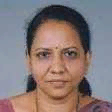International Journal of Image, Graphics and Signal Processing (IJIGSP)
IJIGSP Vol. 7, No. 9, 8 Aug. 2015
Cover page and Table of Contents: PDF (size: 365KB)
Achieving Robustness in Face Recognition by Effective Feature Acquisition
Full Text (PDF, 365KB), PP.41-48
Views: 0 Downloads: 0
Author(s)
Index Terms
Face Recognition, Local Binary Pattern, Principal Component Analysis, Support Vector Machine
Abstract
In the past few decades, face recognition has been a widely researched topic, since it is a robust means of authentication. Extraction of features from the face images during face recognition is a very challenging task. Hence, proper selection of appropriate feature extraction algorithms is vital in this regard. Many robust feature extraction techniques do exist. But their proper selection and combination also plays an utmost role. In this study, 2D face recognition was achieved using the combination of local binary pattern (LBP), principal component analysis (PCA) and Support Vector Machines (SVM). Along with retaining most of the information, PCA is used to reduce multidimensional data to lower dimensions. LBP was mainly used to tackle the problems arising due to expressions. As the facial expression changes, the effect gets prevalent on the rest of the organs of the face. Similarly, the intensity of the corresponding pixels of images also changes. Hence, this study aims to overcome these challenges by applying PCA and LBP algorithms on face images to increase the recognition rate. SVM was used to perform classification on these datasets. This hybrid approach of using LBP and PCA in conjunction increased the recognition rate (RR) and decreased the false match rate. Therefore, this method was found to be more suitable for real-time applications.
Cite This Paper
Sheela Shankar, V.R Udupi,"Achieving Robustness in Face Recognition by Effective Feature Acquisition", IJIGSP, vol.7, no.9, pp.41-48, 2015. DOI: 10.5815/ijigsp.2015.09.06
Reference
[1]Eleyan, Alaa. "Enhanced Face Recognition using Data Fusion." International Journal of Intelligent Systems and Applications (IJISA) 5.1 (2012): 98. DOI: 10.5815/ijisa.2013.01.10
[2]Gurumurthy, Sasikumar, and B. K. Tripathy. "Design and Implementation of Face Recognition System in Matlab Using the Features of Lips." International Journal of Intelligent Systems and Applications (IJISA) 4.8 (2012): 30. DOI: 10.5815/ijisa.2012.08.04
[3]Geeta N., Rahul Dasharath Gavas, "A dynamic attention assessment and enhancement tool using computer graphics", Human-centric Computing and Information Sciences 2014 4:11. DOI:10.1186/s13673-014-0011-0
[4]Geeta N., Rahul Dasharath Gavas, "Enhanced Learning with Abacus and its Analysis Using BCI Technology",I.J. Modern Education and Computer Science, 2014, 9, 22-27. DOI: 10.5815/ijmecs.2014.09.04
[5]Varga, Andrew, and Herman JM Steeneken. "Assessment for automatic speech recognition: II. NOISEX-92: A database and an experiment to study the effect of additive noise on speech recognition systems." Speech communication 12, no. 3 (1993): 247-251.
[6]Sheela Shankar, Dr. V. R Udupi, "A Review on the Challenges Encountered in Biometric Based Authentication Techniques", Volume 2, Issue 6, June 2014, International Journal of Advance Research in Computer Science and Management Studies (IJARCSMS). ISSN: 2321-7782 (Online).
[7]Ali Javed,"Face Recognition Based on Principal Component Analysis, I.J. Image, Graphics and Signal Processing (IJIGSP), 2013, 2, 38-44. DOI: 10.5815/ijigsp.2013.02.06
[8]T. Ahonen, A. Hadid, and M. Pietik?inen, "Face description with local binary patterns: Application to face recognition," IEEE Trans. Pattern Anal. Mach. Intell., vol. 28, no. 12, pp. 2037–2041, Dec. 2006.
[9]G. Zhao and M. Pietik?inen, "Dynamic texture recognition using local binary patterns with an application to facial expressions," IEEE Trans.Pattern Anal. Mach. Intell., vol. 29, no. 6, pp. 915–928, Jun. 2007.
[10]Kamini H. Solanki, Prashant P. Pittalia, "Hybrid approach for robust face recognition by combining local binary pattern and principal component analysis", Proceedings of Fifth IRF International Conference, 10th August 2014, Goa, India, ISBN: 978-93-84209-45-2.
[11]Karamizadeh, Sasan, Shahidan M. Abdullah, Azizah A. Manaf, Mazdak Zamani, and Alireza Hooman. "An Overview of Principal Component Analysis." Journal of Signal and Information Processing 4 (2013): 173.
[12]Turk, M.A., Pentland, A.P., 1991. Eigenfaces for recognition. J. Cognitive Neurosci. 3 (1), 71–86.
[13]Perlibakas, V., 2004. Distance measures for PCA-based face recognition. Pattern Recognition Lett. 25 (6), 711–724.
[14]Yang, J., Zhang, D., Frangi, A.F., Yang, J.Y., 2004. Twodimensional PCA: A new approach to appearance-based face representation and recognition. IEEE Trans. Pattern Anal Machine Intell. 26 (1), 131–137.
[15]Alireza Tofighi, Nima Khairdoost, S. Amirhassan Monadjemi, Kamal Jamshidi, "A Robust Face Recognition System in Image and Video", I.J. Image, Graphics and Signal Processing (IJIGSP), Vol. 6, No.8, July 2014, pp.1-11. Doi: 10.5815/ijigsp.2014.08.01
[16]P.S. Hiremath, Manjunatha Hiremath, "3D Face Recognition based on Radon Transform, PCA, LDA using KNN and SVM", I.J. Image, Graphics and Signal Processing (IJIGSP), Vol. 6, No. 7, June 2014, pp. 36-43. Doi: 10.5815/ijigsp.2014.07.05
[17]Lena Kallin Westin, "Receiver operating characteristic (ROC) analysis", Evaluating discriminance effects among decision support systems.
[18]Shankar, Sheela, and V. R. Udupi. "A Study of Face Databases used as Benchmarks in Face Recognition." International Journal of Innovation and Scientific Research 10, no. 1 (2014): 83-89.
[19]Available at: http://www2.ece.ohio-state.edu/~aleix/ARdatabase.html
[20]Shankar, Sheela, and V. R. Udupi. "Biometric Identification of an Individual Using Eigenface Method." International Journal of Computer Science & Information Technologies 5, no. 4 (2014).

